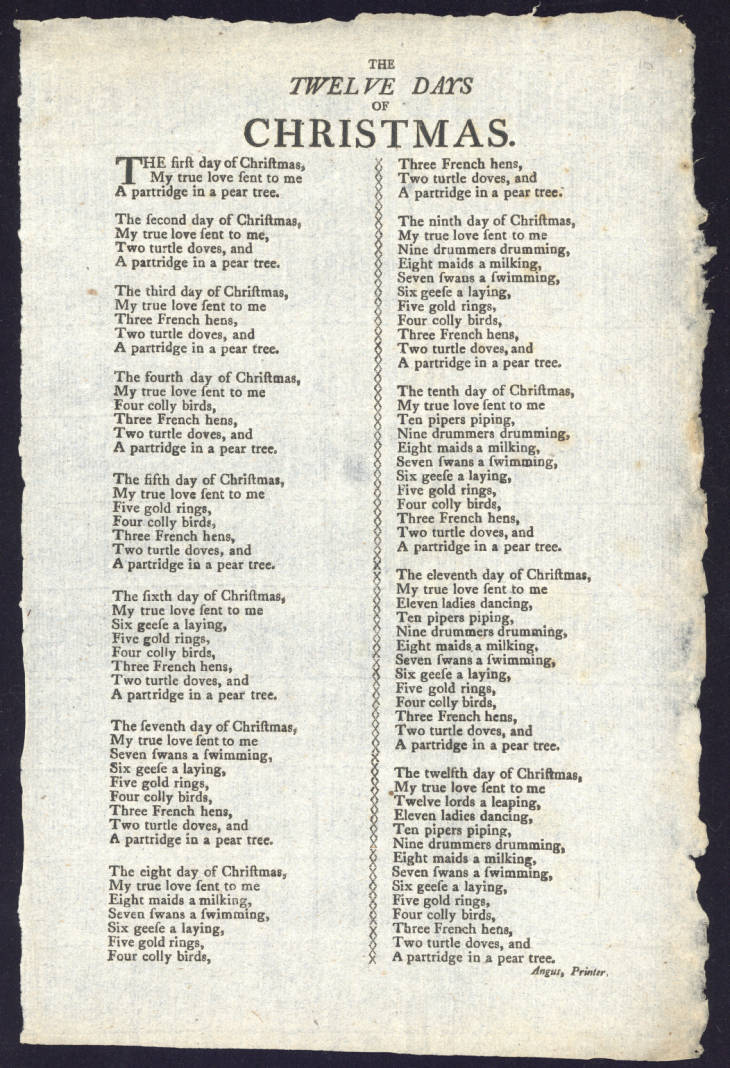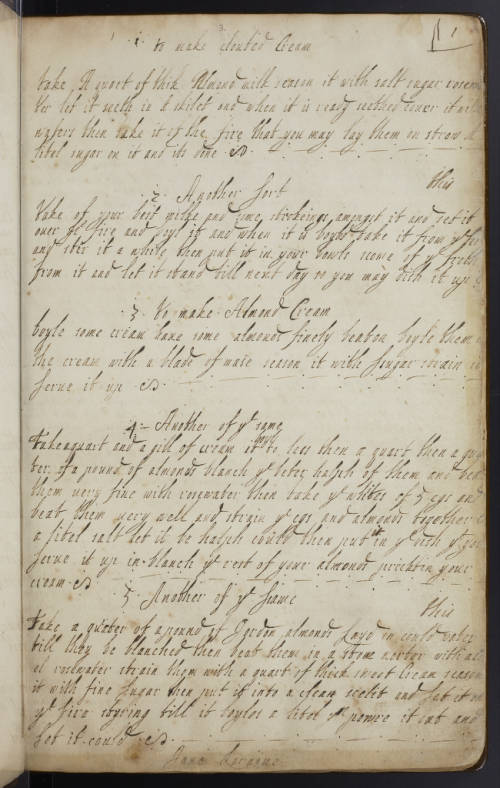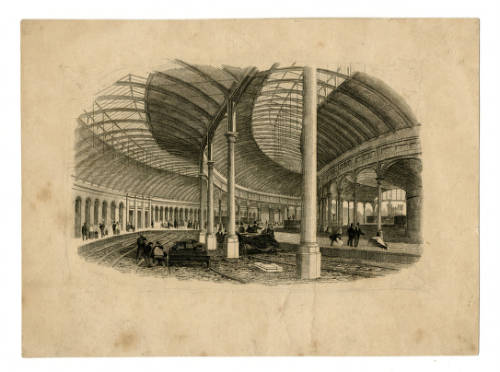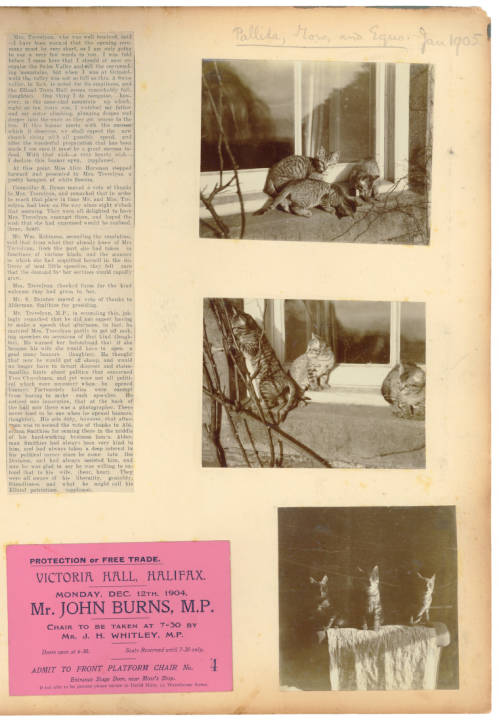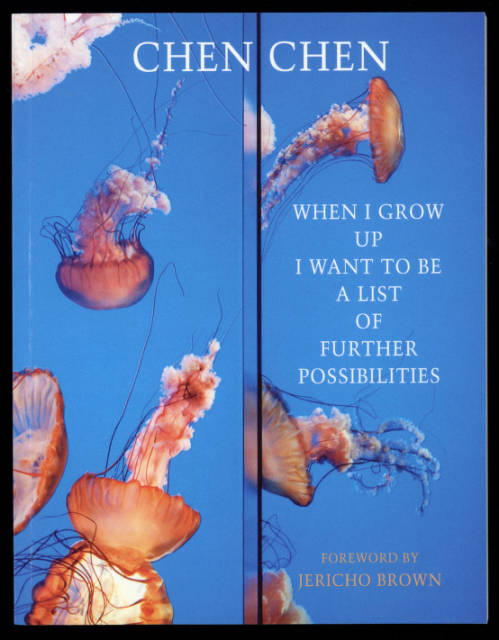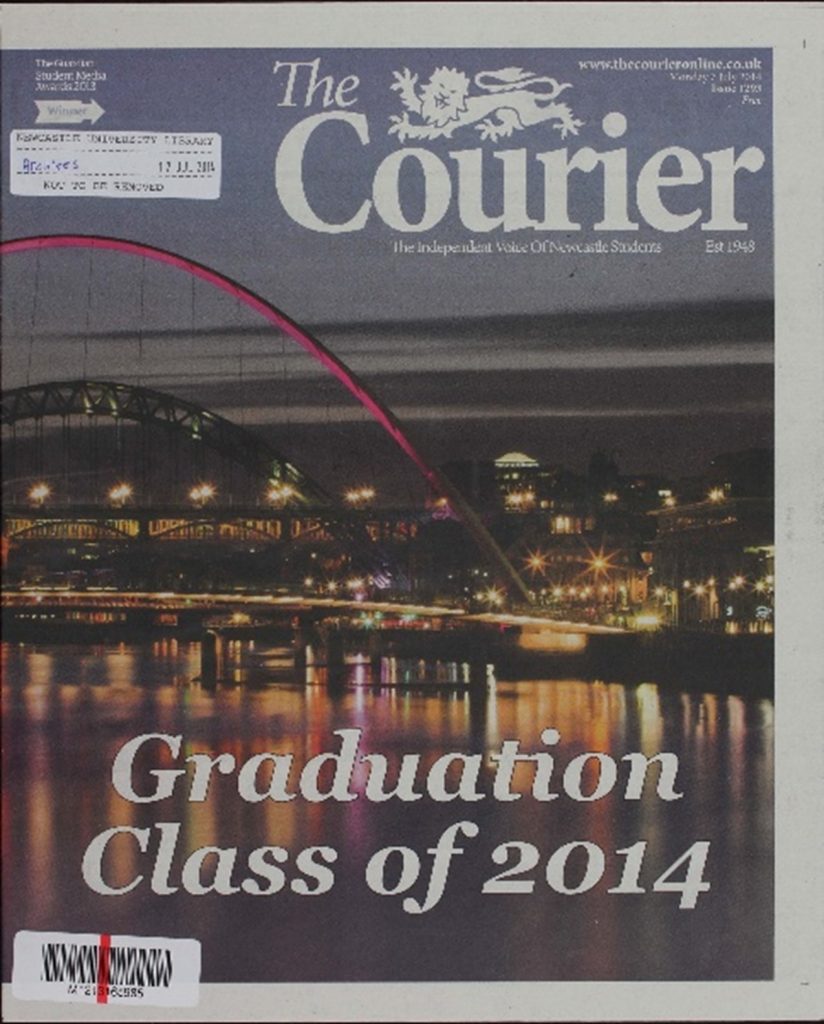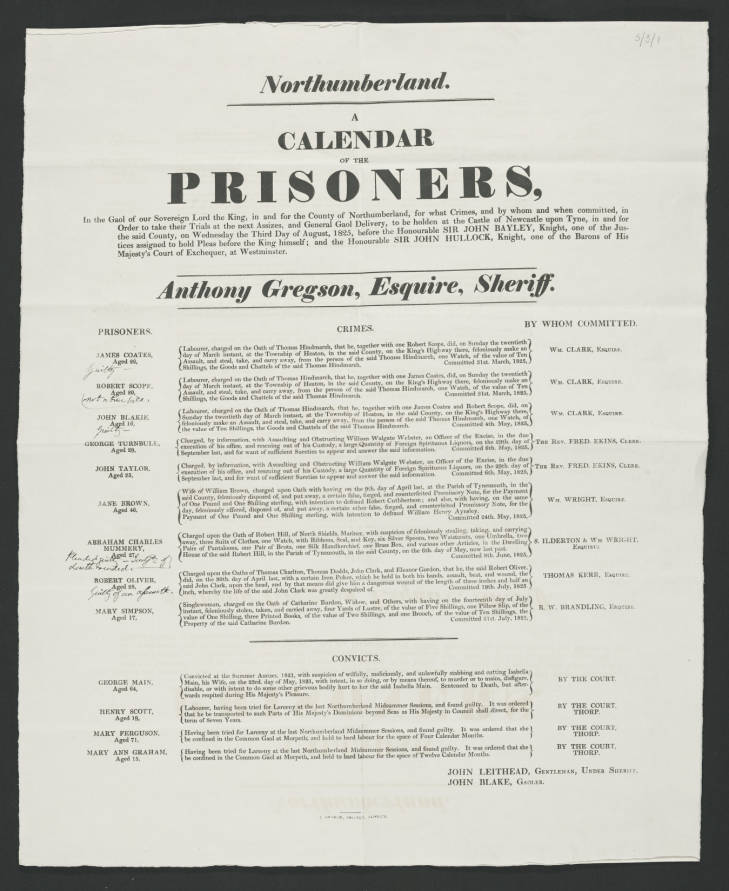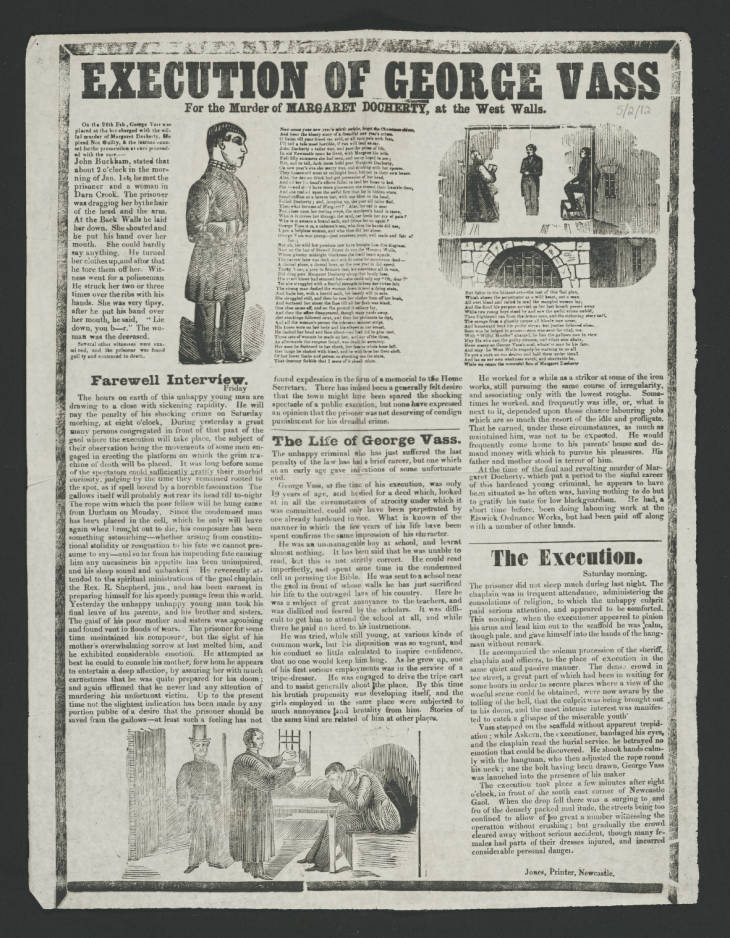The life and adventures of Ann (also spelled ‘Anne’) Jane Thornton, a woman who defied the prescribed gender roles of the nineteenth century, are commemorated in the popular broadside ballad The Female Sailor.
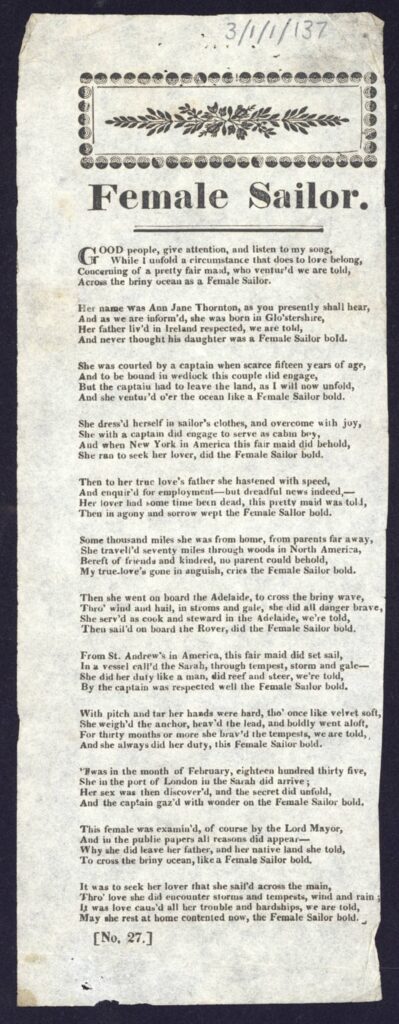
Ann Jane Thornton resisted society’s gender restrictions by dressing in male clothing and going to sea as a sailor. She was born in 1817 in Gloucestershire and was the daughter of a shopkeeper. When Ann was just 6 years old her mother died, and her father moved the family to Donegal, Ireland.
The Female Sailor ballad captures Ann’s meeting and falling in love with an American Captain named Alexander Burke when she was just 15 years old. The two got engaged, but shortly afterwards, the Captain returned to New York to visit his father. Not wanting to be left behind, Ann needed a way to finance her travels to follow her beloved, and so she took the unconventional decision to become a female sailor, leaving her life in Ireland behind.

In the nineteenth century, sailing was a male-dominated activity and women were banned from seafaring professions as many believed that having women onboard was bad luck. Women were also thought to be at risk of sexual harassment and violence from the male crew if permitted on board. As a result, the only way for Ann to pursue her goal of following her fiancé was to disguise herself as a man.
Ann proceeded to obtain male clothing and journeyed to England, where she then boarded a ship to New York as a cabin boy. Once in New York, Ann sought out her beloved fiancé but received the devastating news that he had died.
Whilst abroad, Ann needed an income to support herself, and so she took a job as a cook and steward onboard the Adelaide, earning nine dollars a month. The Female Sailor ballad stresses how Ann took part in every task the same as her male colleagues, doing her duty ‘like a man’, and convincingly taking on her new identity. As well as working on the Adelaide, Ann also worked aboard the Rover and the Belfast, before eventually heading back to London as a ship’s cook onboard the Sarah.
Ann Jane Thornton was far from the only woman to don male clothing and become a sailor. Another broadside ballad within Special Collections and Archives, called the Female Rambling Sailor, tells the story of Rebekah Young, who went by the name Billy Bridle. Whilst at sea, she died by falling from the top of the mast. This ballad perhaps served as a warning to any other women considering disguising their sex to become a sailor.

Ann lived in her new identity as a man for the whole three years she was away from home, going by the name Jim Thornton from Donegal. Conflicting accounts exist of whether it was upon her return to London, or whilst docked in Lisbon, Portugal, that Ann’s sex was revealed, but either way her identity was outed and her life as a sailor came to an end. The revelation happened as a result of a male colleague on board the Sarah catching sight of Ann’s breasts while she was washing. He threatened to disclose her identity to the ship’s Captain unless she had sex with him. Refusing to submit to the sexual harassment, Ann’s identity was revealed to the Captain. Describing the event later, the Captain claimed he was the last to know and could barely believe it.
It is difficult to determine how much of these accounts are true, with many contrasting versions of the ballad existing. However, the very fact of so many iterations surviving demonstrates the extent to which Ann’s story captured the imagination of the British public. Her story was widely reported in newspapers as well as being popularised in The Female Sailor ballad. After reading the newspaper reports, the Lord Mayor of London allegedly sent a city police inspector to investigate her story. The mayor scolded Ann for leaving her father, but also praised her courage, offering to support her financially until she could return home to Ireland.

Ann’s story was told many times by other people. However, the autobiographical chapbook – Interesting Life and Wonderful Adventures of that Extraordinary Woman, Anne Jane Thornton, the Female Sailor, disclosing important secrets, unknown to the public, written by herself – offers a rare insight into the personal experiences of Ann’s life as a female sailor. The publication of this book ultimately provided Ann with the opportunity to reclaim her adventures and recall them in her own voice.
This Treasure of the Month feature was researched and written by Special for Everyone placement student Daisy Alys-Vaughan of the School of History, Classics and Archaeology. our Special for Everyone project.

